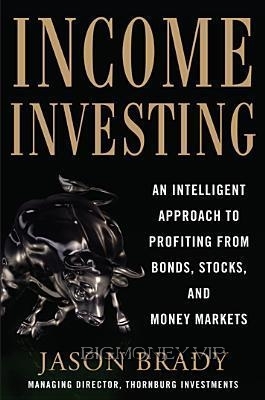
1
INVESTING FOR INCOME
“Amen!” cried Goodman Brown. “Say thy prayers, dear Faith, and
go to bed at dusk, and no harm will come to thee.”
—Nathaniel Hawthorne, “Young Goodman Brown”
If you’ve picked up a book about investing for income, I probably don’t
have to convince you that it’s an important strategy or that income
generation is likely to be a key part of investment returns for the foreseeable
future. But coaxing income from your investment portfolio is easier said
than done. There are a number of serious pitfalls and issues involved in any
income strategy, and we’ll explore them in depth as this book goes on.
Investing for income is not a new concept. John D. Rockefeller, famous
philanthropist and founder of Standard Oil, reportedly said, “Do you know
the only thing that gives me pleasure? It’s to see my dividends coming in.”1
But investors do not need to be ultra-rich or even moderately wealthy to
look toward their nest egg for income. Often this strategy is the basis
behind retirement planning for all sorts of individuals and institutions.
Endowments and foundations are designed to withdraw a certain percentage
of their principal every year in order to meet their objectives, making an
income strategy a perfect fit. Baby boomers are reaching the disbursement
stage, or the stage at which they are no longer collecting wealth but using it,
and as a result, the $17 trillion of investable assets in U.S. households will
likely begin to skew toward income-producing assets and strategies.
SLOW, BUT STEADY
Market talking heads are typically interested only in what prices did today. I
was invited to be on a particular financial news network a little while back
and was asked what the “smart money” was buying “today.” This is not the
way to invest for income, or likely a successful way for most people to
invest toward any goal.
At the end of 2011, something remarkable happened. The S&P 500’s
price was almost exactly the same at the end of the year as the beginning
(down 4/100 of a point or .004 percent). News outlets everywhere reported
that the S&P 500’s return was zero for the year. “Virtually unchanged for
the year,”
said Bloomberg News. But in fact, the total return on the index
was 2.11 percent, because the S&P 500 pays a dividend (albeit a somewhat
paltry one). Investors everywhere are quick to check the price return of all
of their investments and forget the income that rolls in, unheralded, over the
course of a longer investment time horizon.
With the greater availability of information these days, many investors
check their account balances or the prices of what they own on a daily
basis. Their mood is good or bad that day based on what direction those
holdings went. Principally, investors are long on stocks, and therefore,
when speaking with groups of investors, I can be fairly certain that they will
be happy or sad based on the presence of green or red on the ticker running
on the TV. Even if some people have a longer-term investment horizon
(which, these days, means more than a year), they still are focused on price
movements. Income is old fashioned and slow moving. If I own a stock that
generates a 4 percent yield, that yield is likely going to be grossly
overshadowed by the price movement of the stock over shorter periods of
time. If people look at the stock price every day, it’s easy to forget the
dividend payment that comes along every quarter. But when that day
comes, I’ll receive my 1 percent. Of course, because the market
incorporates that dividend payment into the price, it’s likely that most
investors will only notice the payment because the price of the stock went
down by 1 percent that day. So it’s very unsatisfying to an investor who is
focused on returns on a day-to-day basis. Bonds are even worse in this
regard, as prices are, for most fixed-income investments, more staid
compared with the flashing red and green lights of stocks. And even when
there is movement, the price of a bond is much less observable, making it
much harder to celebrate winners or ignore losers.
Here’s a quick thought experiment: Would you rather have a 5 percent
yield for five years, or a series of returns that are: up 12 percent, up 10
percent, down 30 percent, up 35 percent, up 5 percent? Many people, at
least when the whole series is presented, choose the latter. Though you have
Income Investing with Bonds, Stocks and Money Markets by Jason Brady




